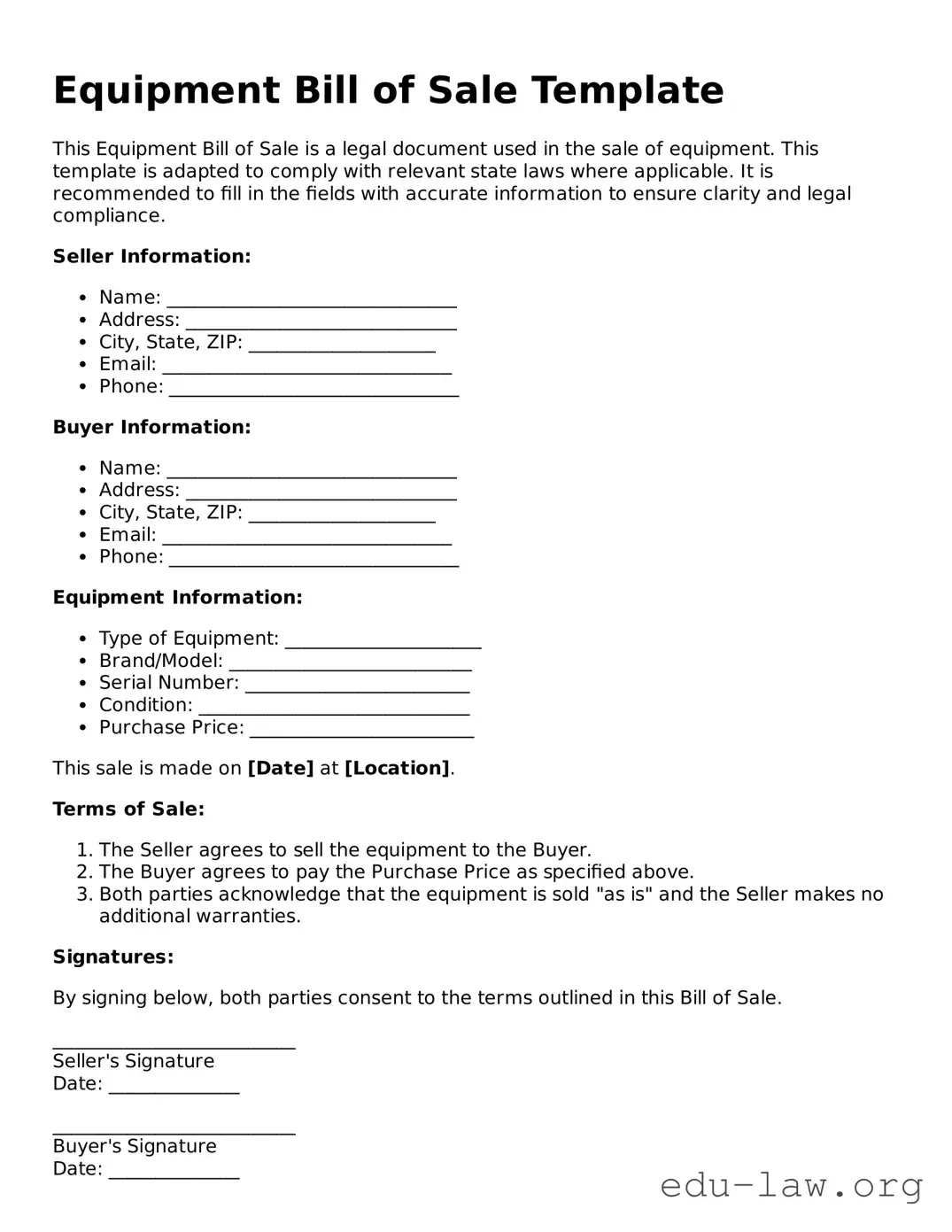Equipment Bill of Sale Template
This Equipment Bill of Sale is a legal document used in the sale of equipment. This template is adapted to comply with relevant state laws where applicable. It is recommended to fill in the fields with accurate information to ensure clarity and legal compliance.
Seller Information:
- Name: _______________________________
- Address: _____________________________
- City, State, ZIP: ____________________
- Email: _______________________________
- Phone: _______________________________
Buyer Information:
- Name: _______________________________
- Address: _____________________________
- City, State, ZIP: ____________________
- Email: _______________________________
- Phone: _______________________________
Equipment Information:
- Type of Equipment: _____________________
- Brand/Model: __________________________
- Serial Number: ________________________
- Condition: _____________________________
- Purchase Price: ________________________
This sale is made on [Date] at [Location].
Terms of Sale:
- The Seller agrees to sell the equipment to the Buyer.
- The Buyer agrees to pay the Purchase Price as specified above.
- Both parties acknowledge that the equipment is sold "as is" and the Seller makes no additional warranties.
Signatures:
By signing below, both parties consent to the terms outlined in this Bill of Sale.
__________________________
Seller's Signature
Date: ______________
__________________________
Buyer's Signature
Date: ______________
This template is made available for use in [State] in compliance with relevant state laws regarding the sale of equipment.
